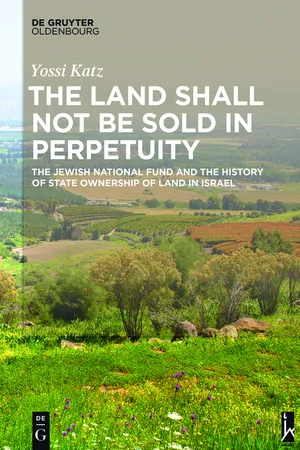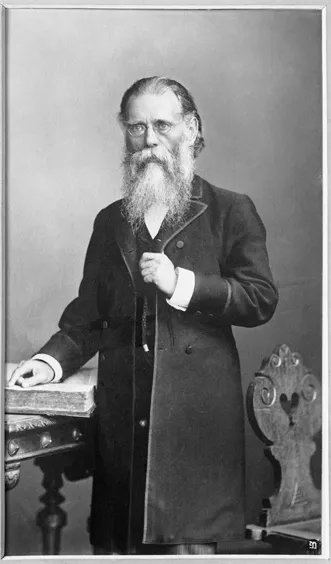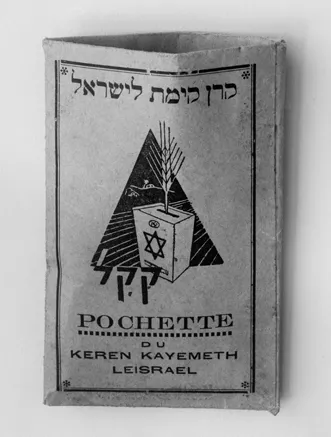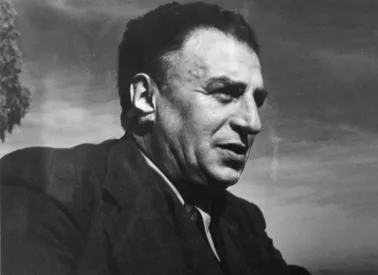![]()
Chapter 1
The Principle of the Prohibition of the Sale of Land in the Doctrine of the Jewish National Fund
At the First Zionist Congress, in 1897, Professor Zvi Herman Shapira suggested the foundation of a national fund whose assets would be collected from the whole of the Jewish people and devoted to the acquisition of land in the Land of Israel; and that this land should never be sold, but could be leased out for a period of forty-nine years.2 In fact, Shapira had made this proposal already at the first conference of Hovevei Zion in Kattowitz in 1884, but it only attracted attention from the time of the First Zionist Congress.3 In 1901, at the Fifth Zionist Congress, the foundation of the JNF in accordance with the principles suggested by Shapira, including that of permanent ownership by the Jewish people of any land purchased, was approved. This principle was to be applied by the JNF.4 Six years later, in April 1907, the statutes of the JNF were approved. They gave legal backing to the principle of the JNF’s permanent ownership of all land that it purchased.5
It would be a simplification to maintain that the principle laid down by Shapira and adopted by the leaders of the Zionist movement in various forums until its final approval in the statutes of the JNF in 1907 was prompted only by the fact that JNF land was purchased with the money of all the Jewish people, and that therefore the Jewish people was the owner of the land and it could not be sold. This was, indeed, one of the reasons – perhaps even the formal reason – and it may be that it was intended to increase donations to the JNF. In a memorandum of the Russian Zionist Organization entitled “What is the Hebrew National Fund, and What is its Purpose?” this principle is emphasized:
The purpose of the National Fund is to work actively for the dignity and future of the people of Israel. Therefore it was decided in advance that it belongs to the people of Israel, that the lands which will be bought by the National Fund are to be considered the property of the Hebrew People for ever, that the people itself, just as it gives its money to the Fund, must always be the controller of the Fund and its resources.6
Zvi Herman Shapira, 1901.
Photo: Yaacov Ben-Dov.
Source: JNF Photo Archive
But it seems that the principle of the JNF’s permanent ownership of the land, and the prohibition on its sale, stemmed from more fundamental reasons. They are connected both with the attitude of the Jewish religion to the ownership of land in the Land of Israel as defined by a divine commandment and with socio-economic ideals according to which Shapira and those connected with the foundation of the JNF sought to promote the Zionist settlement enterprise. The nature of land tenure had clear implications for the possibility and type of settlement, particularly because Zionists considered that the creation of a class of agricultural workers in the Land of Israel was a condition for the fulfillment of their aspirations.7
The JNF Blue Box, 1936.
Photo: Avraham Malavsky.
Source: JNF Photo Archive
Max Bodenheimer, who worked closely together with Shapira, was connected with the JNF from the time of its foundation at the First Zionist Congress, and became its first chairman,8 stated that “Shapira connected his program with the Mosaic precept: ‘The land shall not be sold in perpetuity’ to private ownership, because it is the everlasting building of the People of Israel.”9 Moreover, Avraham Granot (Granovsky), one of the first employees and directors of the JNF, who formulated its doctrine for many years and headed its board of directors from the 1940s onwards, says in one of his articles: “Shapira saw in the JNF a tool for realizing the traditional Jewish concept of national land, which had been accepted by the people in the past.”10 Shapira had been ordained as a rabbi by famous rabbis, and was a gifted Lithuanian rabbi well versed in the Talmud – though he was later won over to the Haskala, but in the 1890s “returned to his religious faith in divine revelation and providence… observed the positive mitzvot and defended them”11 and considered Judaism to be a guide for living.12 He presumably aspired to connect the redemption of Israel with the fundamental religious concept connected with the mitzva of the Jubilee which states that: “The land shall not be sold in perpetuity, for the land is mine” (Leviticus 25, 23).
Avraham Granot, 1950.
Photo: Alex Stragmeister.
Source: JNF Photo Archive
The mitzva of the Jubilee is one of those dependent on the Land: it must be practised only in the Land of Israel, and ordains that land may not be sold in perpetuity, but only for a period of forty-nine years at the most. In the fiftieth year, the Jubilee year, the property is returned to its former owner. In effect, the “buyer” takes a lease on the land for agricultural use for a number of years between two Jubilee years. The Bible also lays down that the rent on the land is fixed in accordance with the number of years until the next Jubilee: the greater the number of years, the higher the rent. In the words of the Bible: “According to the number of years after the Jubilee thou shalt buy of thy neighbor, and according to the number of years of the fruits he shall sell unto thee” (Leviticus 25, 15–16). The reason for the return of the land to its previous owner is given by the Bible as: “The land shall not be sold in perpetuity, for the land is mine” (ibid., 23). Since Shapira was both an orthodox Jew and a Zionist, he wanted to apply the biblical ordinance that the people of Israel had practised in its land before the exile, to the land that would again belong to the people of Israel when they returned to rebuild their motherland. It is, therefore, not by chance that in his plan Shapira defined the maximum leasing period as forty-nine years, for this was the maximum period of the “sale” between Jubilees; it was a complementary ordinance to that forbidding the sale of land in perpetuity. Moreover, if we look more closely at classical biblical exegesis, of which Shapira was certainly aware, we may note that – apart from the religious element, according to which God, and not man, is the supreme owner of the Land of Israel, and therefore it may not be sold – the mitzva of the Jubilee embodies the fundamental concepts of the prevention of trade and speculation, the prevention of the concentration of land and the creation of latifundia that would expel people from their land, and the guarantee of a plot of land in the Land of Israel for every citizen of Israel.13
Some have sought express proof that Shapira had these ideas in mind when he formulated his plan, but the words of Menahem Ussishkin, whose name is connected above all others with the JNF, and who was the president of its directorate for many years, will suffice for our current project. In an article on “The Nature and Value of the JNF,” published in 1903, he stated that the JNF’s principle that land should be held permanently by the JNF and the people, was not a new idea. He wrote:
This socio-ethical concept was embedded in our Torah by our earliest legislator, Moses, who foresaw the evil which could accrue to human society if private ownership of land were unlimited – and it is this evil which even today wastes away the body of mankind. The concept of “for the land is mine” was manifested in the jubilee year, in which the land was returned to its previous owners or their heirs. Thus, every jubilee rectified the inequality which had come about through a variety of reasons. Now, when we wish to return to our land, we have only to follow in the steps of our legislator, and to adopt with our very first actions all the means required to fend off from our land the evils of the agrarian problem… Therefore, let the territory of the Land of Israel belong to all the people and be rented out to whoever cultivates it.14
Franz Oppenheimer, whose name is also associated with the foundation of the JNF, also pointed out that
What the JNF does in appropriating the land as its own eternal possession, permanently, and assigning it to individuals only for cultivating is done in the spirit of the Torah; it observes the mitzvot dependent on the Land according to the deepest intention of the land laws in the Law of Moses: “Let the fathers’ deeds be a symbol for their sons.”15
Menahem Ussishkin, 1939.
Photo: Joseph Schweig.
Source: JNF Photo Archive
In addition to the desire to realize a deep Jewish ideal, the principle of permanent ownership was influenced by the ideas of socio-economic and settlement “reformers” on the need to establish the principle of common ownership of land that were professed, and some of which put into practice, in Europe in the second half of the 19th century. There are those who claim, though this has never been proved, that Shapira himself was influenced by such ideas, which were in accordance with the concept of the Jubilee, and were expounded, among others, by Theodor Hertzka and Michael Flürscheim.16 These “reformers” believed public ownership of the land and its cultivation only under lease to be desirable mainly for the following reasons: a. It would guarantee the farmers freedom from the danger of falling into debt as a result of purchasing the land at a high price and subsequently having to sell their holdings; this would lead to the concentration of land in the hands of a few, and the dispossession and impoverishment of others. As a result, classes differentiated by extreme social and economic inequality would be created. b. Public ownership prevents the proletarization of the village and the migration of villagers to the towns, and thus prevents the creation of densely populated urban centers with all their attendant evils, and preserves the balance between town and country, which is a condition of healthy economic development. c. Private ownership of land may lead to speculation, change of use, and the farmers’ concentration on their hopes of selling at high prices. This process prevents the establishment of a peasant class with a long-term connection to the soil, a class which is essential for the State as a whole. d. As a result of public ownership of the land, the whole community profits from its rise in value. e. Public ownership makes it possible to impose on the tenant conditions suited to the public good, and prevents him/her from taking steps which may harm the public. Thus, for example, the individual will be unable to sell his land to persons who are unsuited to the community, and are likely to lead to its disintegration. f. Public ownership makes possible settlement on the land that will strengthen its national character, a character which may be impaired if the individual is permitted to sell his land for economic reasons, or to allow national elements opposed to the public interest to use the land.
Oppenheimer, whose contribution to the definition of the idea of the JNF as part of a universal framework of concepts of social and economic settlement was considerable, claimed that only the permanent ownership of the land subject to Zionist settlement could preserve the national character of the Zionist project, since...




